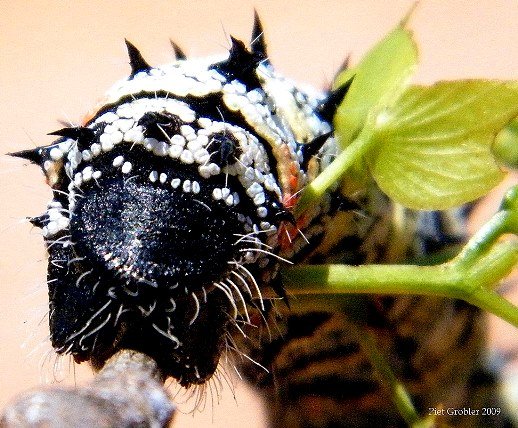Mopane worm shiny side

Author: Ivan Lätti
Photographer: Piet Grobler
Have you ever stared a mopane worm in the face? To make its acquaintance before biting its head off? And become confused about whether this is its front or back end? For who wants to contemplate the backend of a worm? (It will probably not eat with this end, judging from the angle of those black, spiny protrusions.)
Millions of people in the warmer parts of Africa eat mopane worms or madoras without worrying about which end goes in first. Those that “prepare” the worms for the meal do pinch the tail end though, in order to rupture the innards and squeeze out the slimy green gut contents, not considered essential to the delicacy.
Flavour is added by sun-drying or smoking the collection of worms from the bush that will be the dish, fit for a king of these parts. Old cultures own tried and tested traditional recipes lasting beyond mere transitory whims. So, eat them like the locals do, although they’re not Romans.
The proper name of this particular emperor moth, Gonimbrasia belina, is more likely to cause indigestion than the little protein-rich body of the large, colourful caterpillar. Most southern to central African indigenous languages have names for this choice morsel.
In turn, the mopane worm eats much of the soft growth on mopane trees and shrubs, but not exclusively that as variety is the spice of a worm’s life. In the Kruger you may see mopane worms munching leaves of num-num, jackal-berry, wild fig, karree, marula, pigeonwood or cluster-leaf.
The emperor moth that follows has a wingspan of 12 cm. The wing colours range from fawn, green, brown and red, apart from the black and white of the noticeable eyespots and orange on the hindwing eyespots. The males can be spotted by their feathery antennae used in hunting females.
The species has (so far) by itself replenished own numbers, depleted by human consumption of its young, quite adequately. Mopane worm farming is growing, however. Some think it could become more lucrative than cattle farming in some regions (Wikipedia; http://mopaneworm.com).

